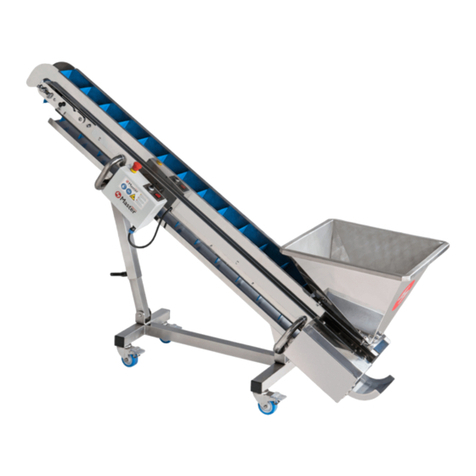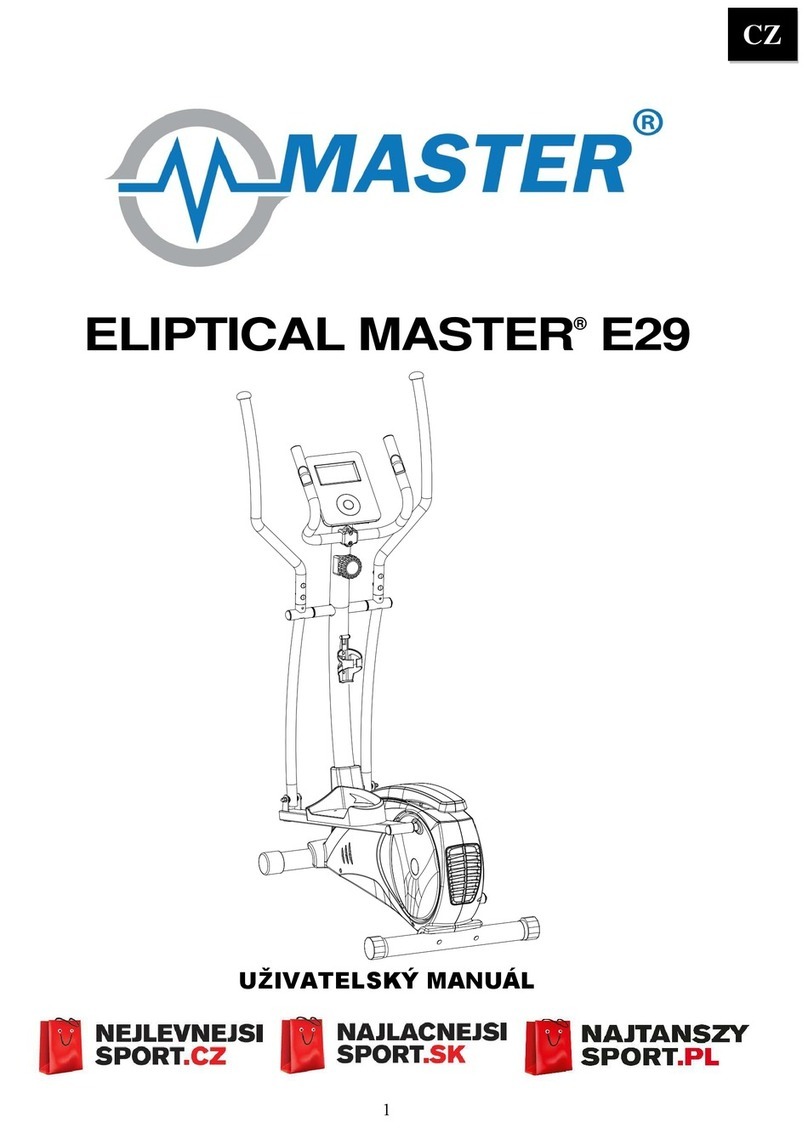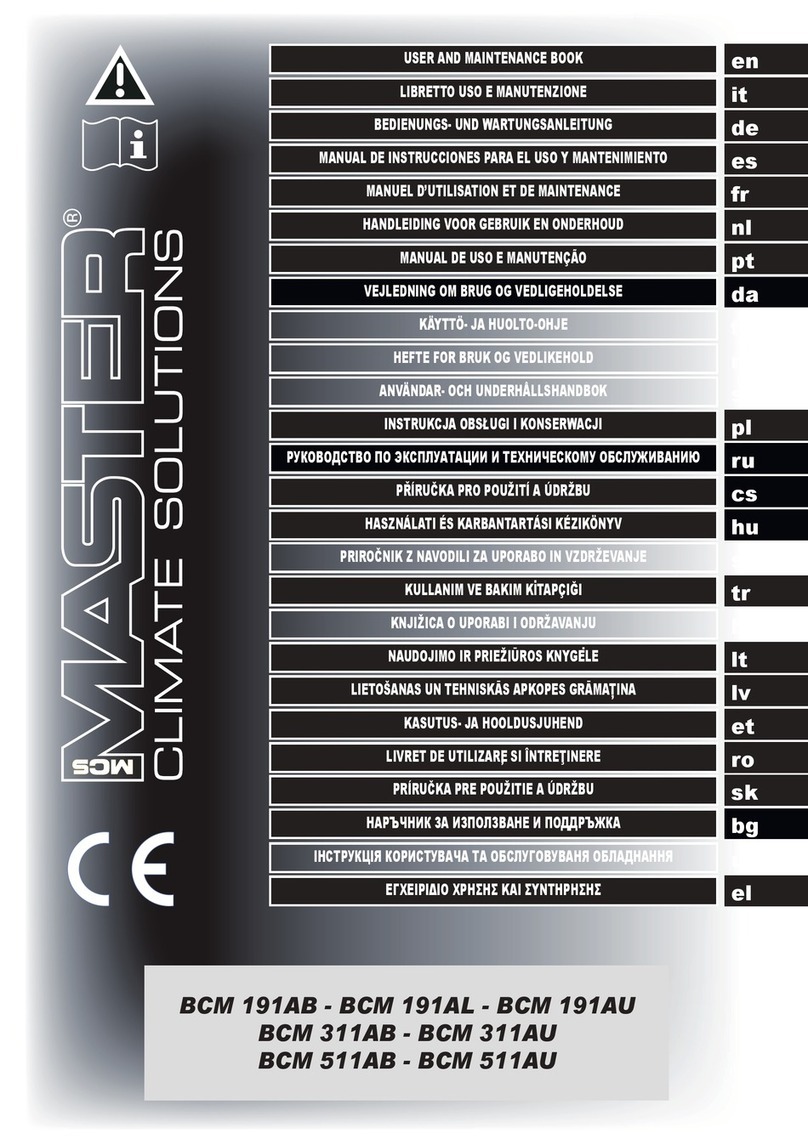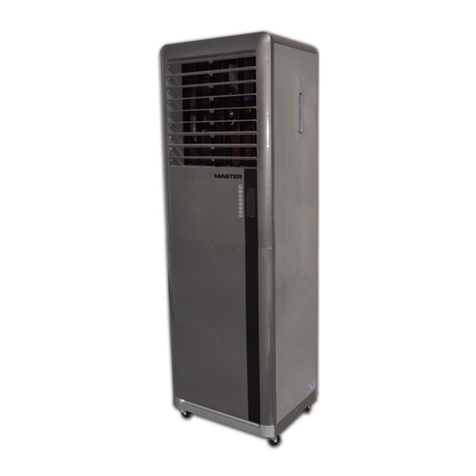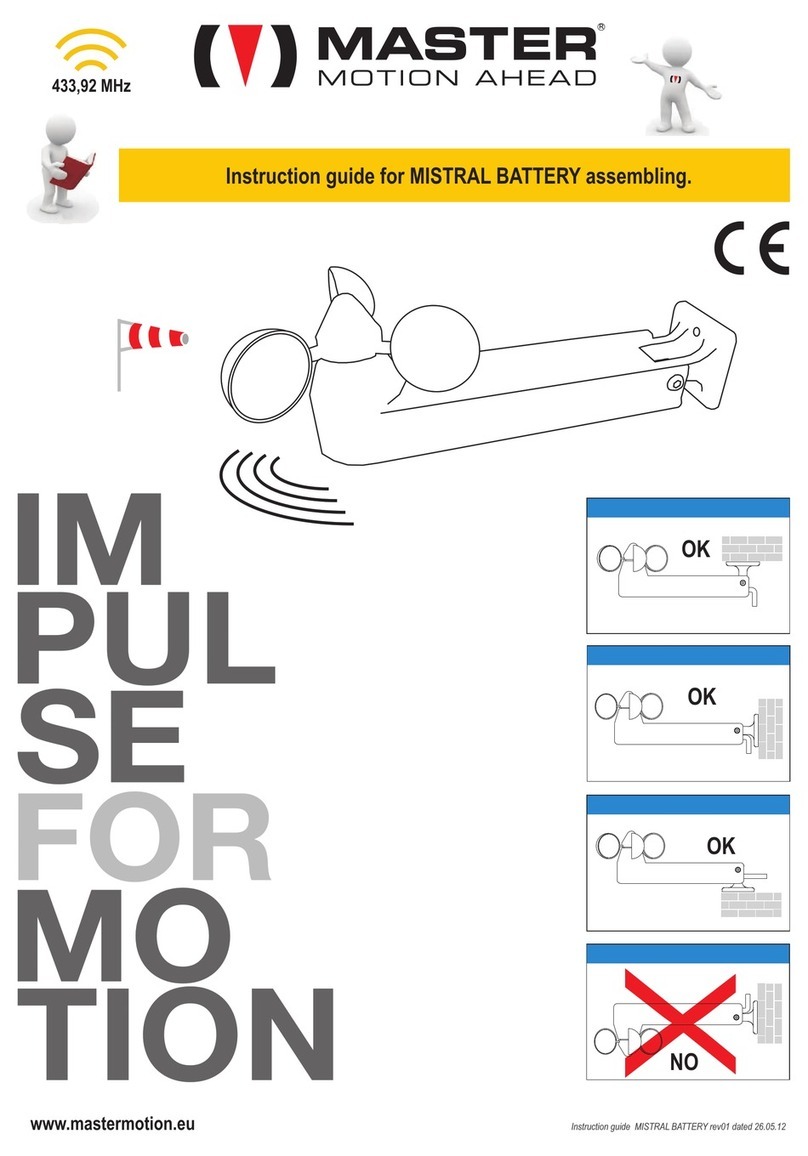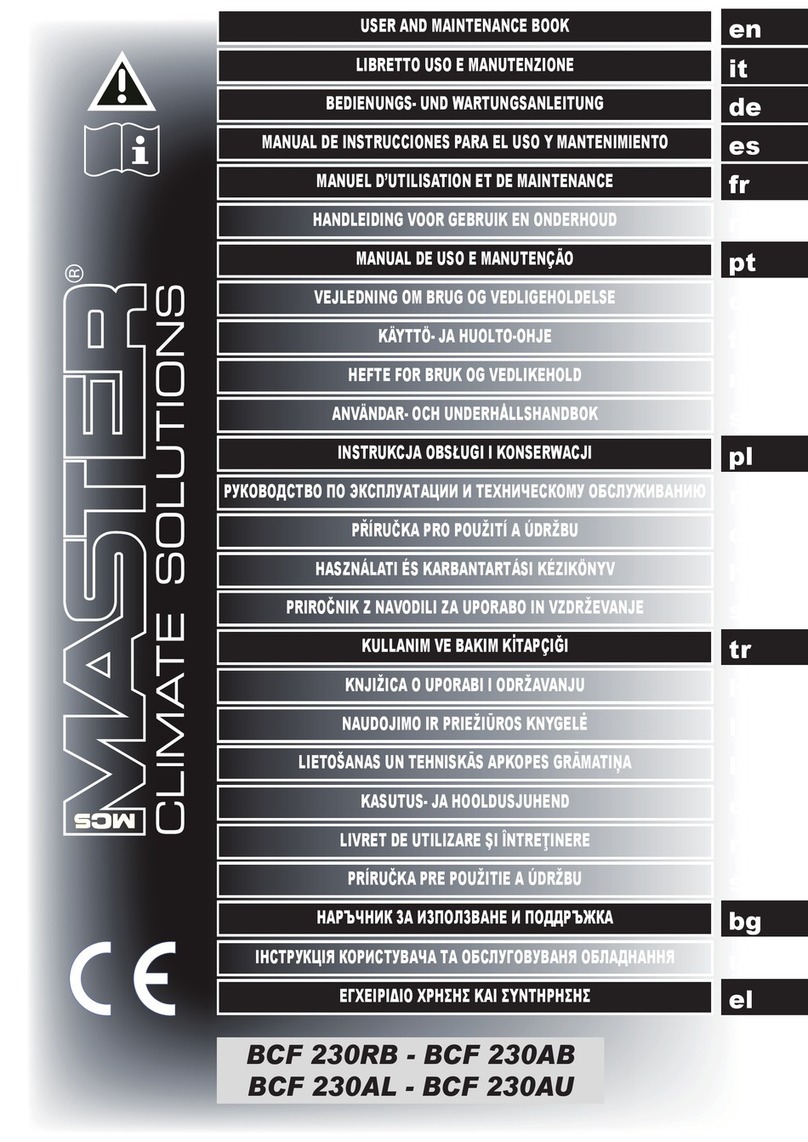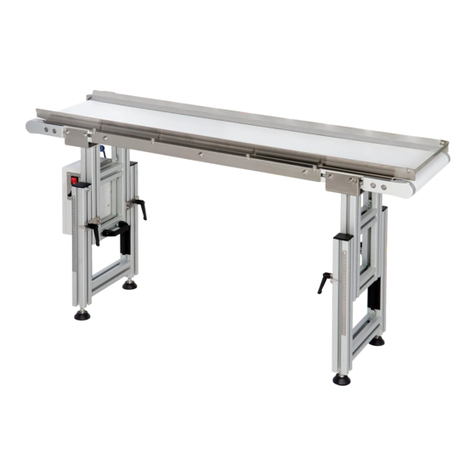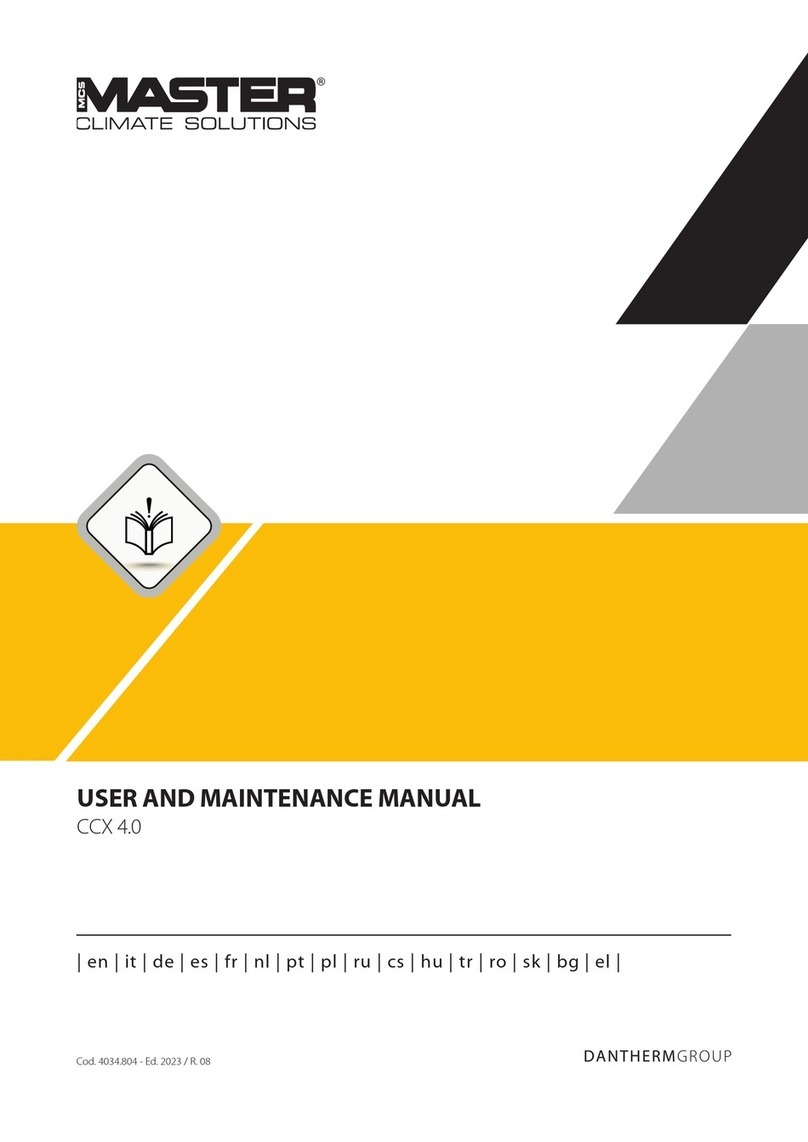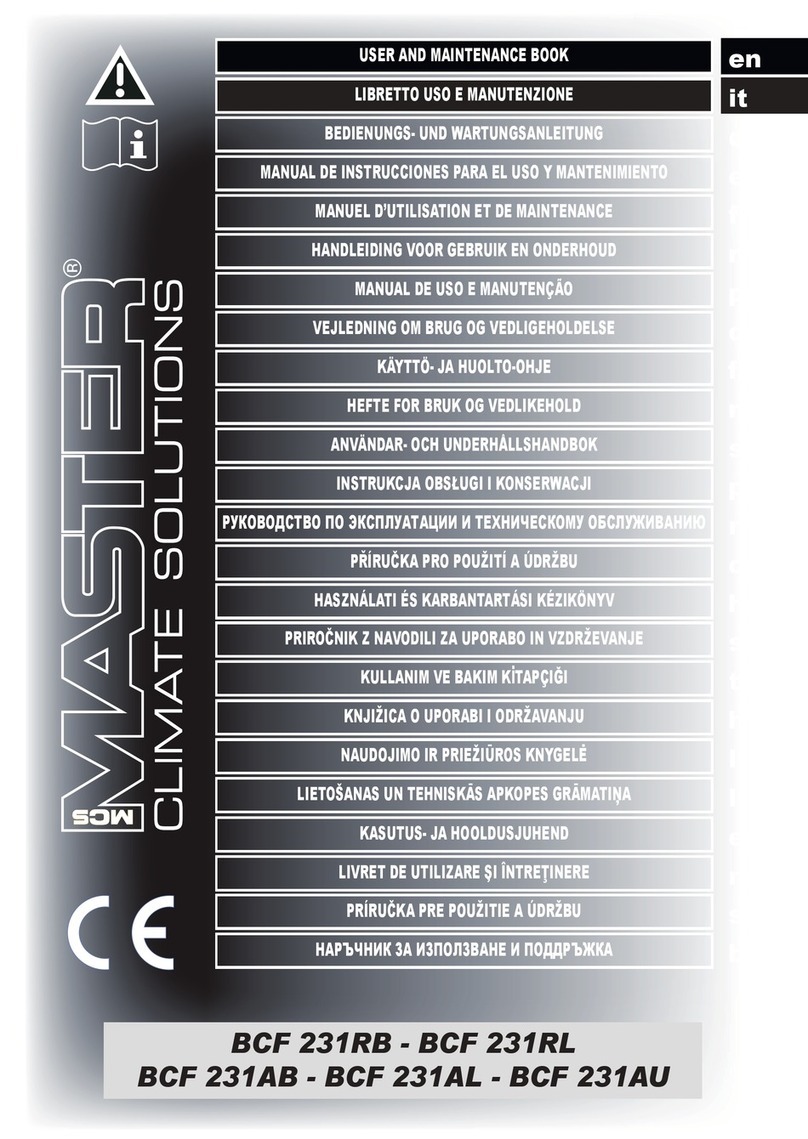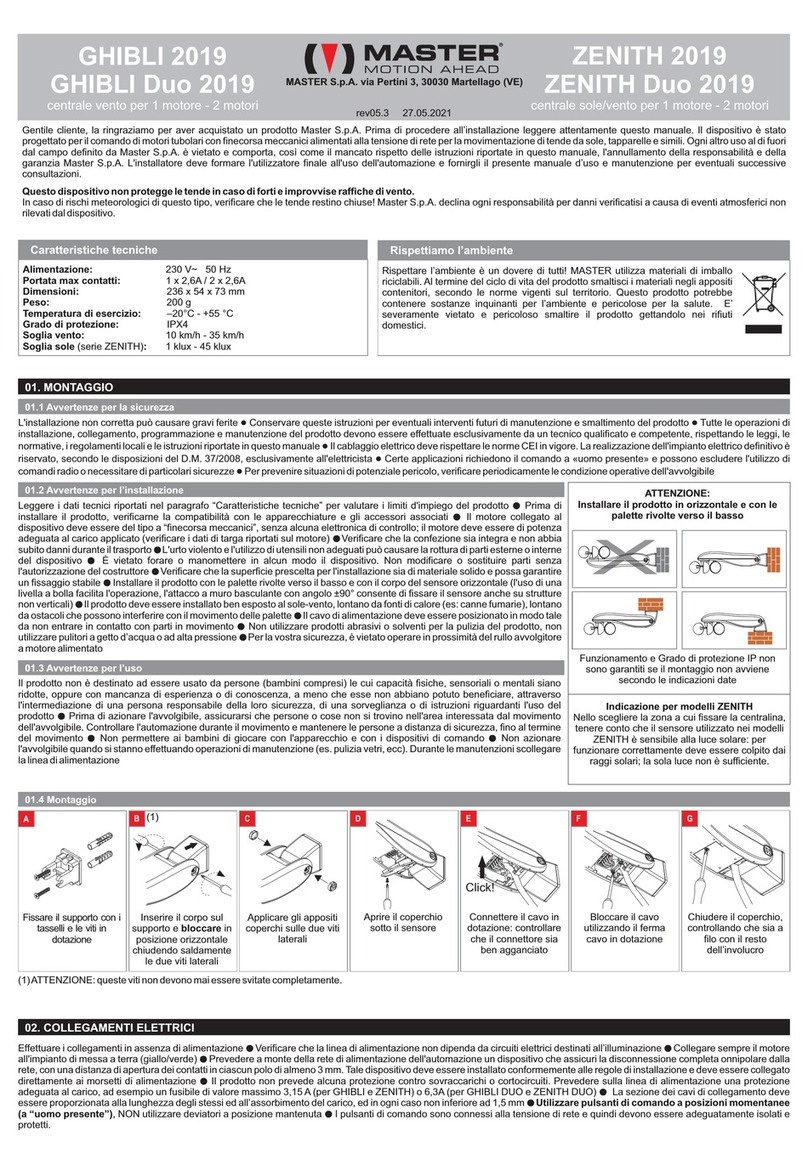
Gentile cliente, la ringraziamo per aver acquistato un prodotto Master S.p.A. Prima di procedere all’installazione leggere attentamente questo manuale: sono
contenute importanti informazioni riguardanti le modalità d'uso e la sicurezza della installazione. Rispettare le istruzioni e conservarle per eventuali
successive consultazioni. L'installazione di questo prodotto è subordinata all'accettazione delle limitazioni d'uso del prodotto (vedi AVVERTENZE).
SHAKE EVO comanda il riavvolgimento automatico della tenda quando sottoposta a vibrazioni provocate dal vento. Il sensore rileva vibrazioni di intensità ed
accelerazione dipendenti dalla soglia impostata. SHAKE EVO è stato progettato per essere utilizzato su tende da sole esterne a bracci tradizionali, cassonate e
simili, motorizzate con motori radio (433,42 MHZ) della stessa casa costruttrice e progettati per la movimentazione di tende da sole.
ATTENZIONE! Questo dispositivo non protegge le tende in caso di forti e improvvise raffiche di vento. In caso di rischi meteorologici di questo
tipo, verificare che le tende restino chiuse! Finché la tenda è ritratta, il terminale della tenda potrebbe non oscillare anche in presenza di vento!
Prima di comandare la manovra di discesa della tenda assicurarsi che non siano presenti condizioni atmosferiche avverse!
ATTENZIONE! Questo sensore misura la rapida oscillazione del terminale e non la velocità del vento!
ATTENZIONE! Non memorizzare il sensore in più motori: 1 sensore per 1 motore!
Master S.p.A. declina ogni responsabilità per danni verificatisi a causa di eventi atmosferici non rilevati dal dispositivo. Ogni altro uso al di fuori dal campo definito
da Master S.p.A. è vietato e comporta, così come il mancato rispetto delle istruzioni riportate in questo manuale, l'annullamento della responsabilità e della
garanzia Master S.p.A. L'installatore deve formare l'utilizzatore finale all'uso dell'automazione e fornirgli il presente manuale d’uso e manutenzione per eventuali
successive consultazioni.
Rispettare l’ambiente è un dovere di tutti! MASTER utilizza materiali di imballo riciclabili. Al termine del ciclo di vita del prodotto smaltisci i
materiali negli appositi contenitori, secondo le norme vigenti sul territorio. Questo prodotto potrebbe contenere sostanze inquinanti per
l’ambiente e pericolose per la salute. E’severamente vietato e pericoloso smaltire il prodotto gettandolo nei rifiuti domestici.
Rispettiamo l’ambiente
Peso: 100 g
Dimensioni: 145 x 38 x 20 mm
Alimentazione: 3V (2 batterie alcaline AAA)
Temperatura di esercizio: –20°C - +55 °C
Potenza massima trasmessa, e.r.p. : <10 mW
Portata: *20m
Banda di funzionamento: 433,050 – 434,790 Mhz
Frequenza radio: 433.42 MHz
CARATTERISTICHE TECNICHE
SHAKE EVO
R
L'installazione non corretta può causare gravi ferite Conservare queste istruzioni per eventuali interventi futuri di manutenzione e smaltimento del prodotto●
●Tutte le operazioni di installazione, collegamento, programmazione e manutenzione del prodotto devono essere effettuate esclusivamente da un tecnico
qualificato e competente, rispettando le leggi, le normative, i regolamenti locali e le istruzioni riportate in questo manuale Certe applicazioni richiedono il
comando a «uomo presente» e possono escludere l'utilizzo di comandi radio o necessitare di particolari sicurezze Per prevenire situazioni di potenziale
pericolo, verificare periodicamente le condizione operative dell'avvolgibile
●
●
1.1 Avvertenze di SICUREZZA per l’UTENTE
Prima di installare il prodotto, verificarne la compatibilità con le apparecchiature e gli accessori associati Verificare che la confezione sia integra e non abbia
subito danni durante il trasporto L'urto violento e l'utilizzo di utensili non adeguati può causare la rottura di parti esterne o interne del dispositivo È vietato
forare o manomettere in alcun modo il dispositivo. Non modificare o sostituire parti senza l'autorizzazione del costruttore Verificare che la superficie
prescelta per l'installazione possa garantire un fissaggio stabile Nel caso di più apparecchiature radio nello stesso impianto, la distanza fra di loro non deve
essere inferiore a 1,5 m Il prodotto può essere utilizzato esclusivamente con tende a bracci, con o senza cassonetto Non utilizzare prodotti abrasivi o
solventi per la pulizia del prodotto, non utilizzare pulitori a getto d’acqua o ad alta pressione
●
● ●
●
●
● ●
●Il prodotto deve comandare un solo motore tubolare;
l'utilizzo di un solo sensore per due o più tende a bracci è vietato Per la vostra sicurezza, è vietato operare in prossimità del rullo avvolgitore a
motore alimentato L'errata installazione del prodotto può essere causa di non corretto funzionamento dello stesso; si raccomanda di seguire
scrupolosamente le istruzioni per la messa in opera contenute in questo manuale
●
●
Il prodotto potrebbe non essere in grado di rilevare vibrazioni quando la tenda è ritratta. Prima di comandare la manovra di discesa della tenda
assicurarsi che non siano presenti condizioni atmosferiche avverse In alcune circostanze l'azione del vento sulla tenda potrebbe non generare
accelerazioni di intensità e durata tali da essere rilevate dal sensore, oppure il motore sintonizzato potrebbe non essere in grado di ricevere il
segnale di pericolo emesso dal sensore; questo prodotto non può perciò essere considerato una sicurezza assoluta a protezione della tenda ma
un mezzo per ridurre la probabilità che eventi atmosferici avversi la possano danneggiare
●
●Prima di azionare l'avvolgibile, assicurarsi che persone o
cose non si trovino nell'area interessata dal movimento dell'avvolgibile. Controllare l'automazione durante il movimento e mantenere le persone a distanza di
sicurezza, fino al termine del movimento Non azionare l'avvolgibile quando si stanno effettuando operazioni di manutenzione (es. pulizia vetri, ecc). Durante
le manutenzioni scollegare la linea di alimentazione
●
1.2 Avvertenze di SICUREZZA per l’INSTALLATORE
1.3 Avvertenze per l’USO
www.mastermotion.eu
AVVERTENZE
*La portata della trasmissione dipende da diversi fattori (ad esempio, presenza di ostacoli tra trasmettitore e ricevitore, condizioni meteo, presenza di disturbi radio, stato della
batteria, …). Prima di effettuare l'installazione, verifica che le condizioni ambientali siano idonee all'utilizzo di un sistema di trasmissione radio.Altri dispositivi funzionanti alla stessa
frequenza potrebbero provocare interferenze riducendo la funzionalità dell'impianto. I sistemi radio possono essere utilizzati laddove eventuali disturbi o malfunzionamenti
del trasmettitore o del ricevitore non presentino fattore di rischio, o se tale fattore è annullato da opportuni sistemi di sicurezza.
1
1
rev00 01.06.2022
